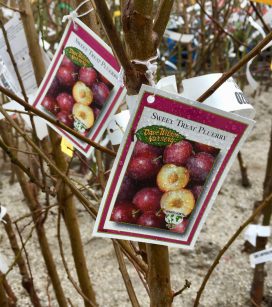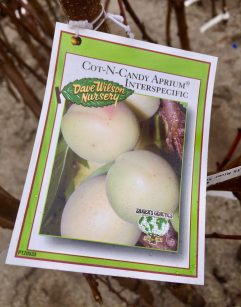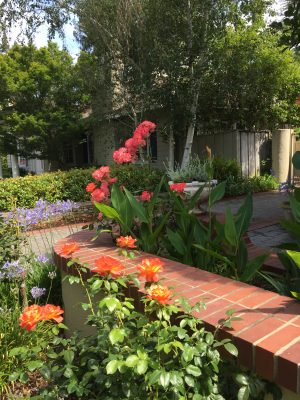I may not live where I can grow fruit trees but that doesn?t stop me from dreaming. Looking over the availability lists of bare root fruit trees at our local nurseries I see several new varieties that I?m hoping to find eventually at the farmer?s market.

How delicious does a Sweet Treat Pluerry sound? This is a first of its kind combination with the sweetness of a cherry and the zing of a plum resulting in colorful fruit that hangs on the tree for over a month. Or how about planting a Cot-N_Candy White Aprium from a bare root? This white flesh apricot-plum hybrid fruit tree has incredible very sweet and juicy flavor.
A friend of mine has a fruiting mulberry tree. The first time I tasted one of these juicy blackberry-looking fruits I was hooked. Black mulberries were grown near ancient temples for fresh eating in Asia, Europe and the Mideast., where the trees thrived in the heat, poor soils and drought. They can be grown as a tree or large shrub making them perfect for smaller gardens.

Shop now for bare root plants while they are still dormant. Even if you want to add fruit trees or other edibles to your garden and the weather has interfered don?t delay. Once leaves emerge or flower buds start to swell the tree roots have already started growing. You want your tree to start developing permanent roots in their new home- yours. Stone fruits such as apricots, peaches, plums and cherries are going to start waking up first so they are best put in the ground soon. Fruit trees like pears and apples wake up later so you can wait a bit longer to plant those varieties.
Don?t plant in heavy saturated soil with a high clay content. If your soil drains poorly it?s best to place your new bare root tree at an angle in a trench, cover with soil and water in. Then wait to plant until the soil is crumbly and friable with plenty of pore space. Digging in waterlogged clay soil is one of the worst things you can do for your soil?s health.
What?s the correct way to plant a bare root tree? According to research amending the soil is no longer recommended. Mountain Feed & Farm Supply in Ben Lomond has a great web site with all the information you need to get your new fruit trees off to a good start including pruning, staking, mulching and care as they mature.
What fruit tree varieties can you grow here in the mountains? Well, almost everything. Most of us get 700-1200 chilling hours where the temperature is 45 degrees or less during the dormant season. You can find out how many hours of chilling your area gets by going online to www.getchill.net and use the WunderMap from Weather Underground. You can give a fruit tree more chilling in the winter but not less. Those in coastal Santa Cruz, for instance, can grow Fuji apples as they require only 300 hours of chilling but not Red Delicious. We can grow both.
What if you don?t get full sun where you?d like to grow fruit trees? Apples, pluots and plums are good choices for an area that gets some sun- at least 5 hours- every day during the growing season. The ideal is full sun but these trees will still set and ripen some fruit in partially shaded conditions. With peaches, nectarines or apricots it?s a different story. These fruits need hot sun to develop sweet, tasty fruit. Too little sun and they will not deliver anything close to what you have in mind.
Don’t miss the opportunity to add a fruit tree or other edible to your garden this winter.






